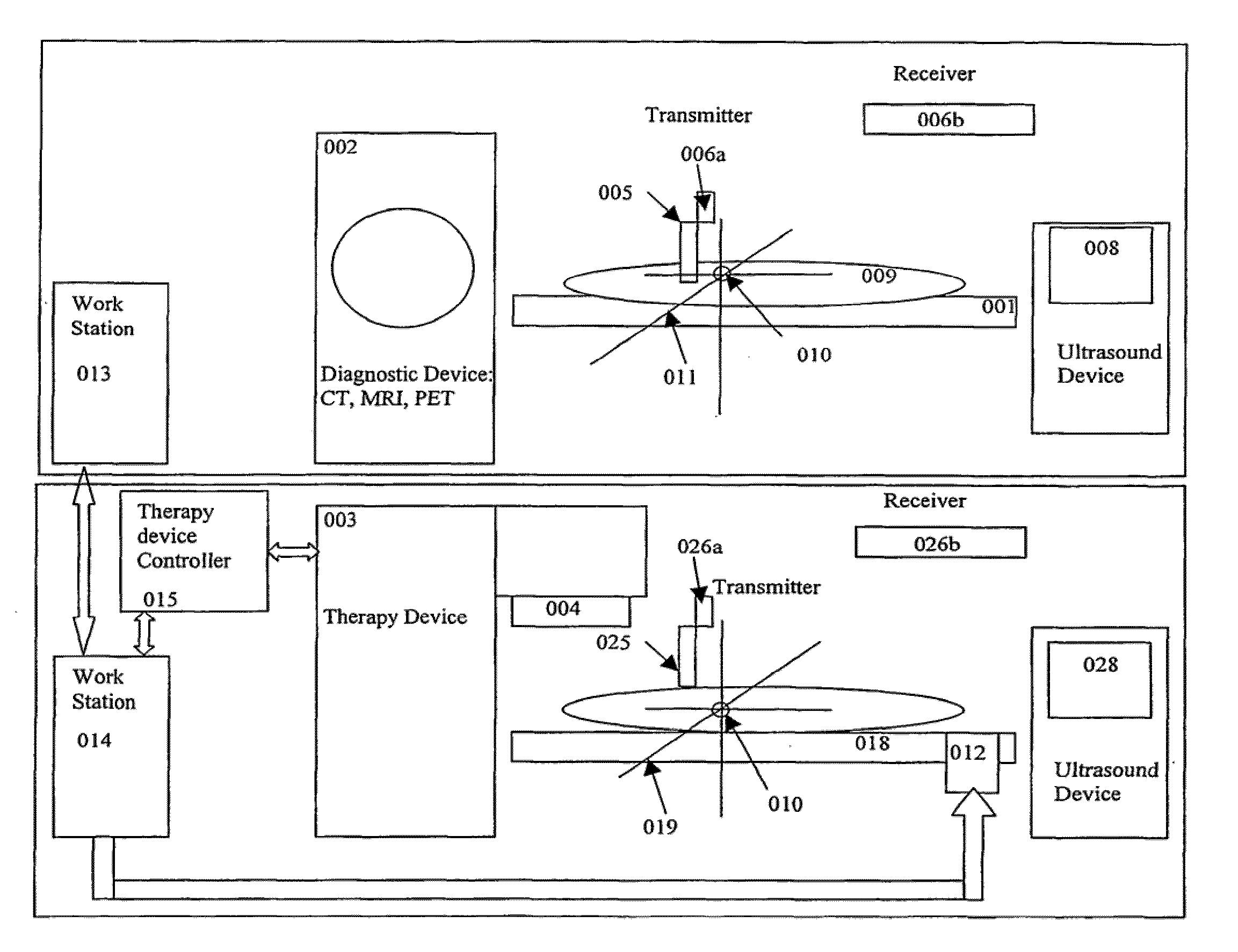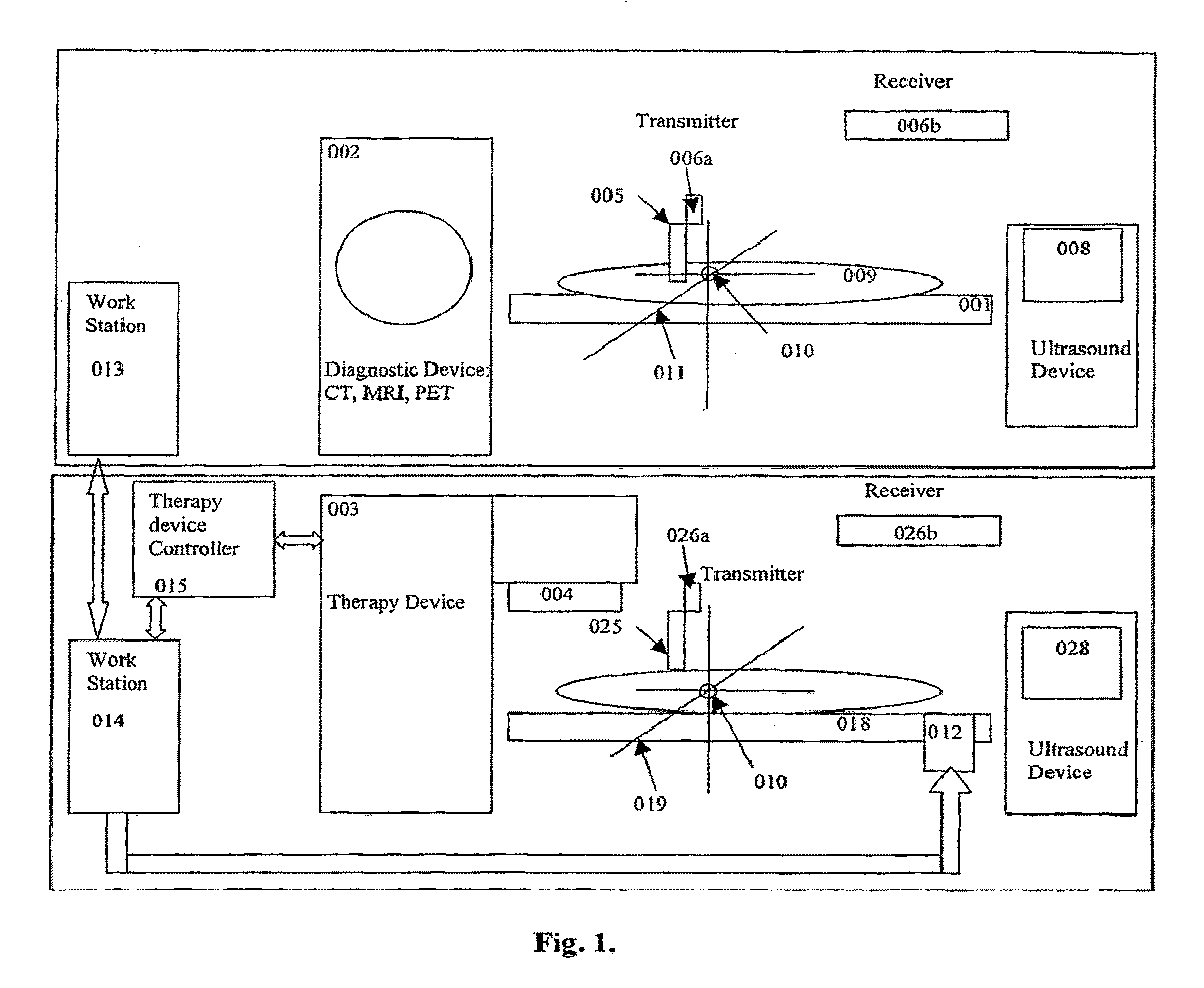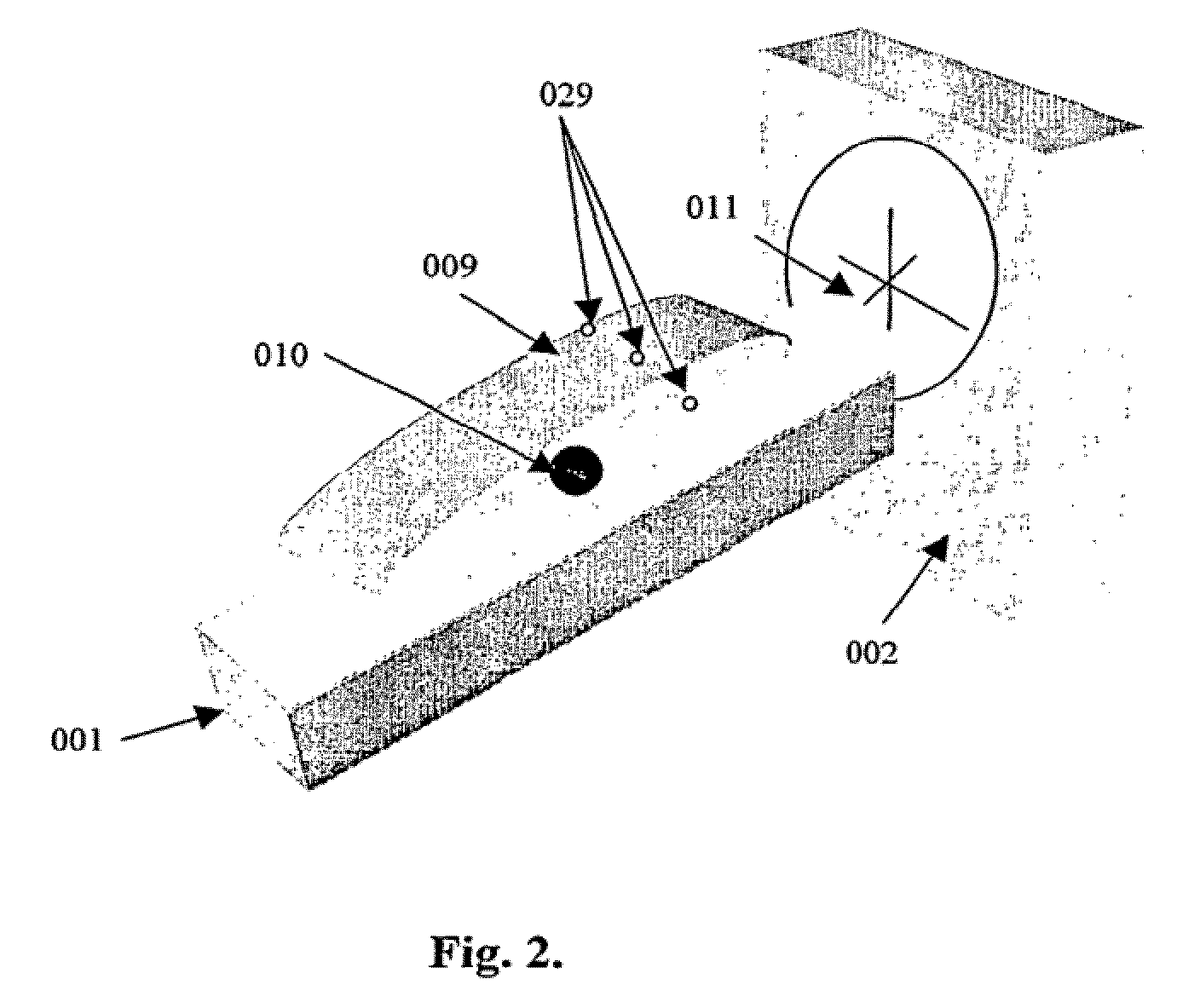Methods and Systems for Lesion Localization, Definition and Verification
a technology of lesion localization and definition, applied in the direction of magnetic variable regulation, therapy, instruments, etc., can solve the problems of certain complications, treatment failures, and radiation doses that cannot be delivered to the correct location in the patient's body
- Summary
- Abstract
- Description
- Claims
- Application Information
AI Technical Summary
Benefits of technology
Problems solved by technology
Method used
Image
Examples
Embodiment Construction
[0080]An illustration of an embodiment of the method and apparatus of the present invention is shown in the components of the apparatus and images derived from the figures. In the schematic diagram of FIG. 1 the embodiment of the invention is generally illustrated. In order to achieve one of the objectives of the present invention, that is, to obtain the most accurate possible definition of the size, location and orientation of a tumour 010, it has been found that the target area of a patient's body 009 believed to comprise a tumour 010 may be scanned or diagnosed using two distinct diagnostic apparatuses, and that the resulting images be compared. This may be achieved by comparing the image of the tumour 010 acquired through the use of a diagnostic device selected from group comprising an MRI, CT or PET with the image of the tumour 010 obtained with an ultrasound apparatus, such as those of Acuson, GE Medical Systems, Siemens, Toshiba and others. The order in which the two images i...
PUM
 Login to View More
Login to View More Abstract
Description
Claims
Application Information
 Login to View More
Login to View More - R&D
- Intellectual Property
- Life Sciences
- Materials
- Tech Scout
- Unparalleled Data Quality
- Higher Quality Content
- 60% Fewer Hallucinations
Browse by: Latest US Patents, China's latest patents, Technical Efficacy Thesaurus, Application Domain, Technology Topic, Popular Technical Reports.
© 2025 PatSnap. All rights reserved.Legal|Privacy policy|Modern Slavery Act Transparency Statement|Sitemap|About US| Contact US: help@patsnap.com



